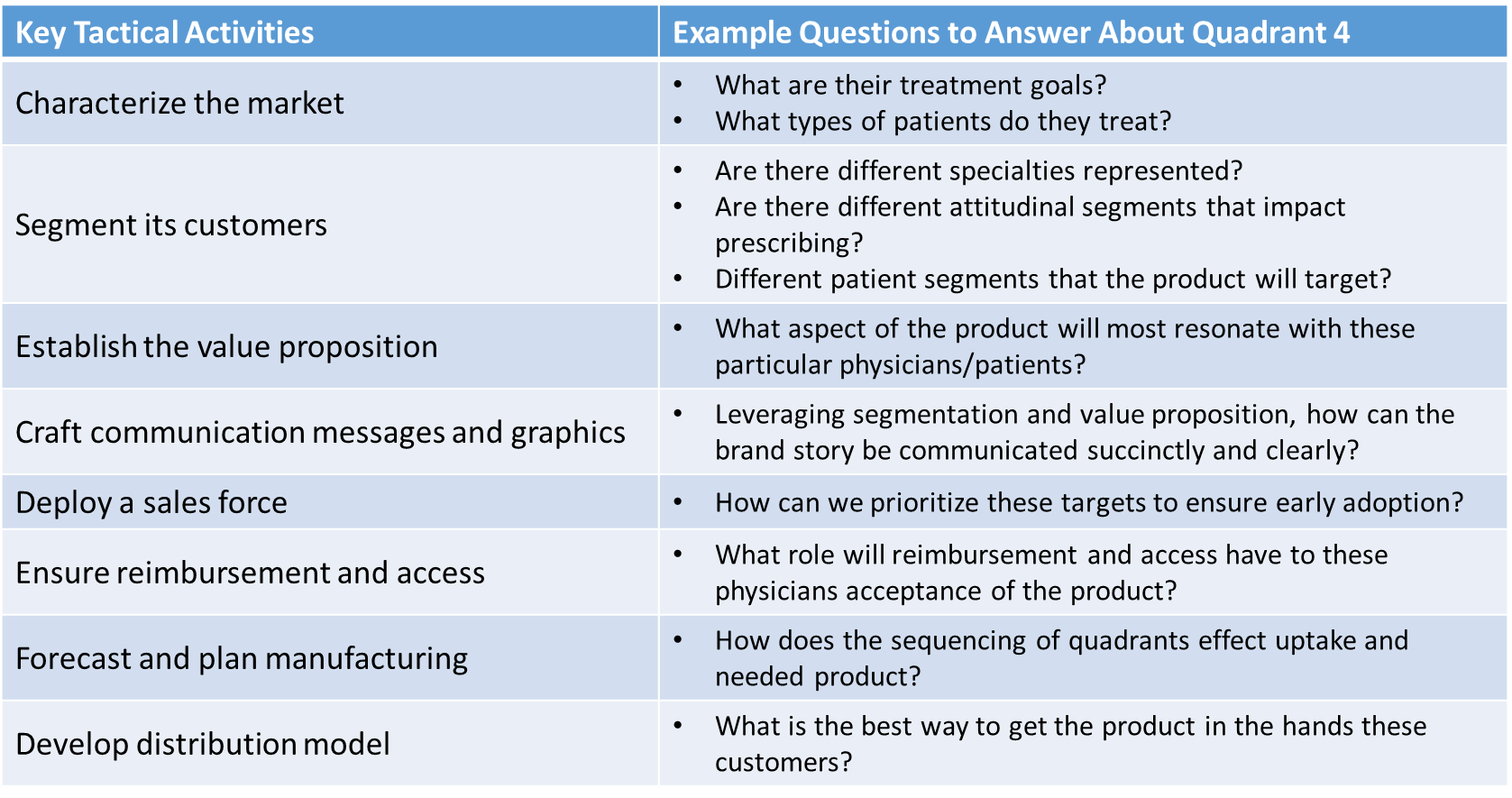The day is finally here, the day you have been working towards for the last 10 years. Countless hours planning and analyzing the data. All in anticipation of your PDUFA date. With such a great investment of money, time and energy, how can companies ensure a successful launch for their product?
This year it is anticipated that there will be more than 40 new drug launches. Many of these new products will be launched by companies that have yet to commercialize any other products. The list of items to accomplish can be daunting for even the most seasoned marketer. At a minimum the company needs to:
- Characterize the market
- Segment its customers
- Establish the value proposition
- Craft communication messages and graphics
- Deploy a sales force
- Ensure reimbursement and access
- Forecast and plan manufacturing
- Develop a distribution model
Notice that there is no strategy development listed above. All of these elements are very tactical in nature. But how does a company execute on this list? What is the guiding principle for establishing these efforts?
Further complicating this task is that the team has been in “sell mode” for years about the product’s commercial potential and now wants to realize all the opportunity. This creates a conflicting dynamic in establishing a launch strategy that may not fulfill all of the funding “promise” immediately.
In fact, this is one of the most common problems that we see in establishing the overarching strategy and value propositions for small companies. Generally, these companies want their product to be written by all doctors for all patients at the time of launch, without developing a strategic framework of how to get there. The reality is that there are very few discontinuous innovations that are widely adopted at launch. This has become more common, as orphan products enter markets with no competition, but still this remains the exception, not the rule.
Deciding on Your Starting Position
Without a doubt the most important element for a successful launch is that stakeholders (physicians and patients alike) have a good experience with the product. For physicians, the product must perform as expected, be easy to prescribe with minimal hassle as part of the follow-up. For patients, they must feel (either through symptoms or lab values) that the product is working, and is worth whatever baggage the medication brings with it, from side effects to co-pays. If these criteria are satisfied, the physicians will continue to prescribe and patients will continue to take this new medication. If either stakeholder does not have a positive experience then the physician is likely to doubt that the product claims are true and potentially discontinue prescribing the new product. So this begs the question, how can we ensure that the initial prescribing of the new product will lead to positive experiences and a continued interest to prescribe?
Imagine a 2×2 grid where on the x axis you have all patients and some patients, and on the y axis you have all doctors and some doctors. Now, let’s number the quadrants from 1 – 4 as represented below:
Returning to our desire to realize all of our products’ potential on day 1, most brands look for a way to be in quadrant 1 at launch. The problem with quadrant 1 is it is difficult to find a value proposition that can achieve this, almost impossible to find the words or graphics to communicate it and most other activities become undifferentiated. The real risk, however, is that as sales representatives ask for the business associated with this quadrant, the physician uses the product widely and then has a negative experience with the brand. The quote we hear most often in this case, “My clinical experience tells me the product doesn’t work as well as seen in the clinical studies.”
Alternatively, starting in quadrant 4, provides a “launch pad” for a successful launch. It provides a clear story as to which patients the physician should prescribe the product and can provide more focus for all other tactical decisions. Furthermore, it limits physician targets to those who have viewpoints that will be accepting of the story and begin using the product immediately.
Once a positive brand perception is established among both physicians and patients, the path forward will be to move into quadrant 2 or quadrant 3 and then eventually into quadrant 1. In this way, the full value of the product is realized but it is sequenced over the life of the brand to successfully start the brand and then grow it over time, whether through a broader patient base or adoption by new prescribers. This framework of a strategic roadmap for the brand, establishes the basis against which all launch activities can be measured, transforming a list of tactical decisions into an orchestrated plan for the brand.
Now that we’ve identified we want to launch in quadrant 4, how do we execute on our tactical list above? We need to begin tailoring all the activities to understand how quadrant 4 is both similar and different to the other quadrants. Some examples below:
Preparing for launch can be a daunting task, but taking a pragmatic, intelligent and well thought out approach can position a brand for success instead of just checking off a list of “must dos” before the big day.










